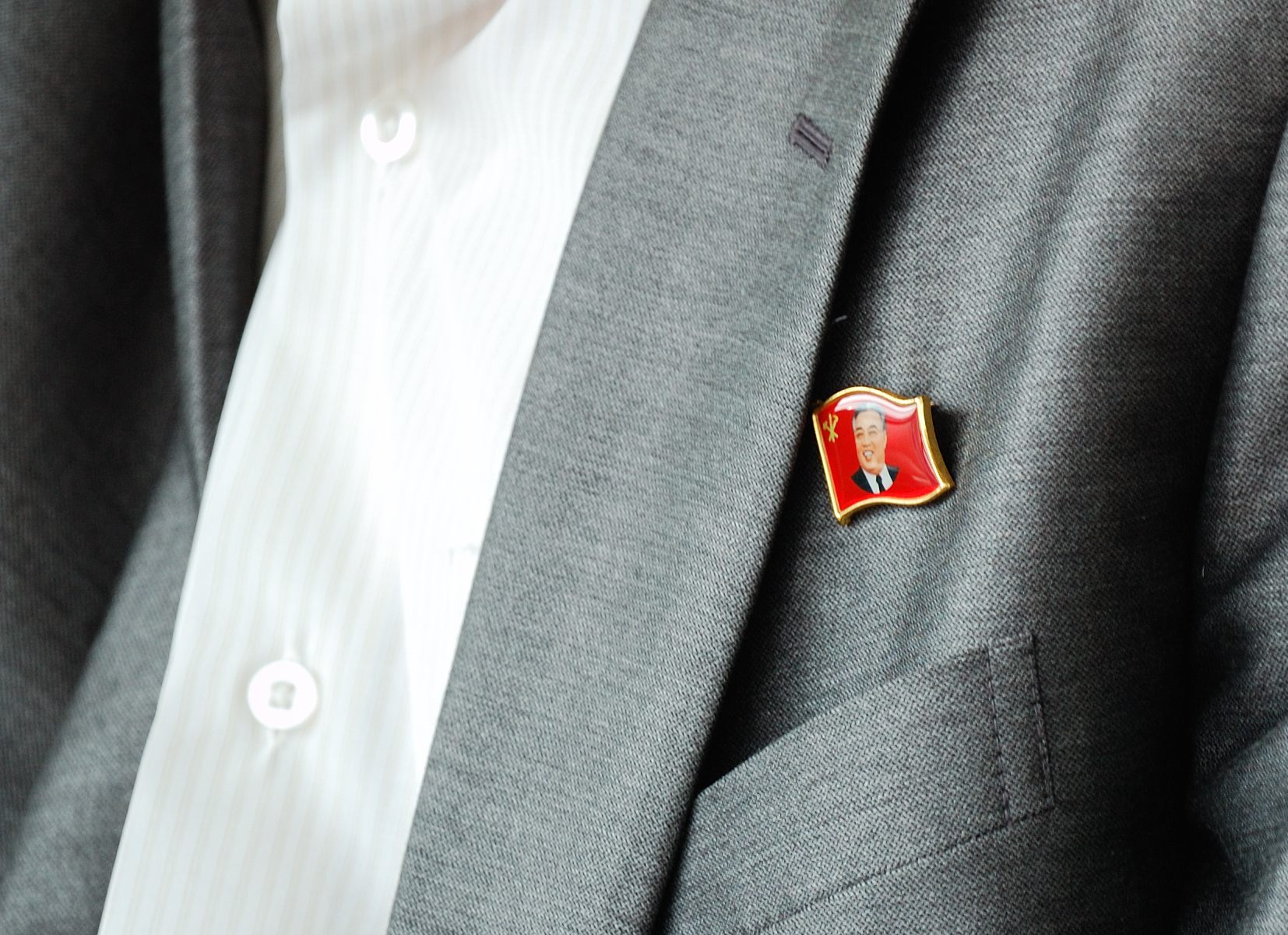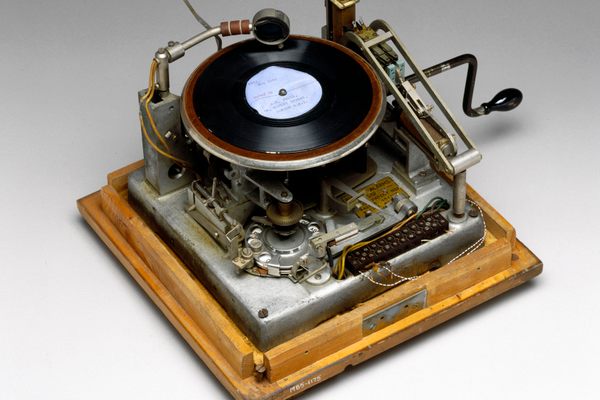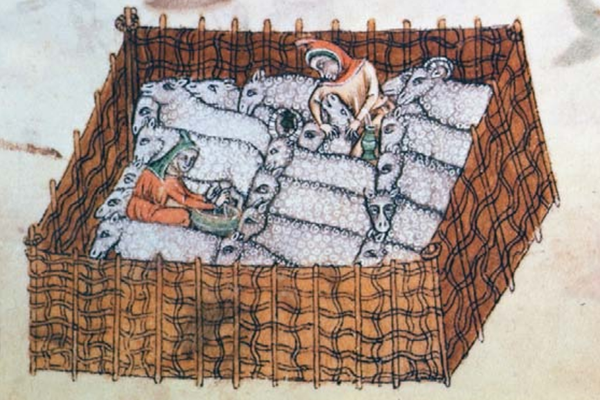Object of Intrigue: North Korea’s Black-Market Lapel Pins

A worker at Pyongyang Airport wears a lapel pin depicting Kim Il-sung. (Photo: (stephan)/Flickr)
February 16 marks the birthday of North Korea’s Dear Leader Kim Jong-il, who would have turned 75 this year had he not succumbed to a heart attack on a train in 2011. In Pyongyang, Jong-il’s birthday is being celebrated with a series of special events including mass dances, an international figure skating competition, and a flower show highlighting Kimjongilia, a begonia cultivar named for the leader.
At these celebrations, the comrades of the DPRK will be keeping the departed leader—and his father, Eternal President of the Republic Kim Il-sung—close to their hearts in the form of red lapel pins worn on the left side of the chest. Distributed by the Workers’ Party of Korea, “Kim pins,” featuring either one or both of the late leaders, are a mandatory patriotic accessory for adults. Forget to wear one, and there may be consequences—in 2012, rumors circulated that the reason current leader Kim Jong-un’s wife had not been seen in over a month was that she appeared in public without her Kim pin and was accordingly subjected to “repercussions.”
There are several varieties of Kim pin, one of which, the dual-Kim pin, has caused quite the stir over the last few years. Prior to Kim Jong-il’s death, the standard pin worn was a red flag adorned with a portrait of a smiling Kim Il-sung and a small Workers’ Party symbol. After December 2011, newsreaders on North Korea’s state-controlled KCNA TV channel began sporting a pin that showed both Jong-il and Il-sung. According to Radio Free Asia, the Workers’ Party gave this dual-portrait pin to high-ranking executives and military leaders, but not ordinary citizens. This state of affairs led to the pin becoming a sought-after item for which DPRK residents were willing to pay top dollar.

A Chinese version of the dual-portrait pin, available on eBay from seller collection128. (Photo: collection128/eBay)
Official pins are the work of Mansudae Art Studio, the propaganda factory responsible for churning out murals of Kim Jong-il frolicking with rosy-cheeked school children and hanging out in fields of flowers. But China has gotten in on the game, producing black-market versions of the pins that get smuggled into the DPRK to be sold, swapped, and bartered. These knock-off pins are available to international buyers for a few bucks each on eBay.
In January 2015, Radio Free Asia reported that North Koreans were using the pins ”in lieu of cash to pay for accommodations, meals and drinks.” By July 2015, the Workers’ Party had issued a warning to residents that selling a two-Kim pin was a political crime and a ”commercialization of supreme dignity.” By this time, the glut of black-market pins had reduced their trading value from $29 to $0.57.
Using pins as a form of payment may seem unusual, but they are more benign than that other popular non-cash currency in North Korea: crystal meth.

















Follow us on Twitter to get the latest on the world's hidden wonders.
Like us on Facebook to get the latest on the world's hidden wonders.
Follow us on Twitter Like us on Facebook